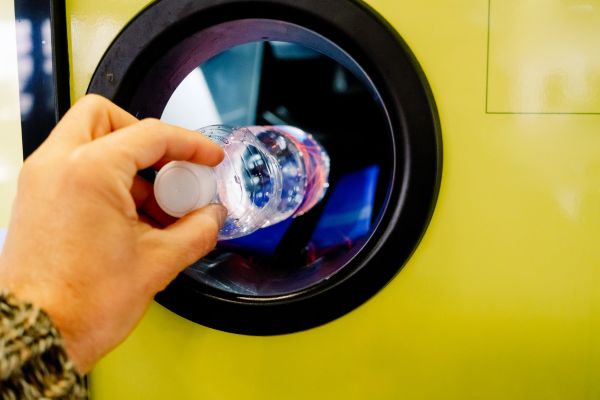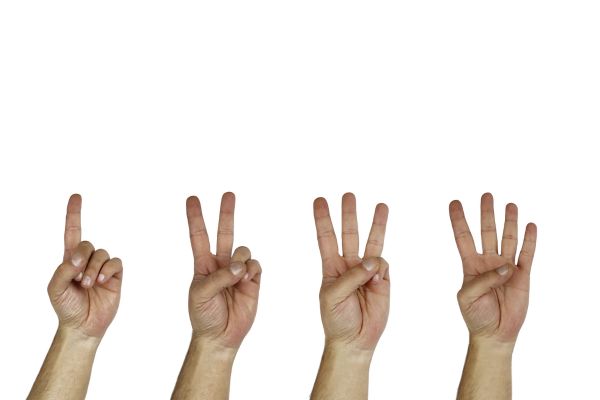Every minute, one million plastic bottles are purchased worldwide, and the Ellen Macarthur Foundation estimates that 32% of this plastic packaging ends up in the environment.
The best way to reduce the impact of this pollution is to ensure that it’s collected and recycled. Most beverage containers are easily recycled, and collection systems exist through curbside and local community recycling bins and recycling centers. Despite this, many still find their way into the environment.
Another way to combat this pollution is to create value in these containers. the introduction of a bottle bill or container deposit system can give instant value to these containers and help to increase collection rates. So, what is a bottle bill?
A bottle bill, also known as a bottle deposit system or a container deposit scheme (CDS), is a recycling program that encourages the return and recycling of beverage containers such as bottles and cans. The basic concept behind a bottle bill or container deposit scheme is to place a refundable deposit on these containers when they are purchased, which consumers can later reclaim when they return the containers for recycling.
What Is A Bottle Bill And How Does It Work
Bottle bills or CDSs are implemented at the state or regional level, and they may vary in terms of:
- the types of containers included
- the amount of the deposit
- and the rules governing the program.
These programs are often used to target specific types of beverage containers that are commonly found as litter and are highly recyclable, such as carbonated soft drink and beer bottles, as well as aluminum cans.
These types of programs are considered effective in promoting recycling, reducing litter, and conserving resources. They have been implemented in various parts of the world to address the environmental impact of beverage container waste. However, the success and acceptance of bottle bills can vary depending on factors such as deposit amounts, convenience of return locations, and public awareness.
History of Container Deposit Schemes
The concept of bottle bills began to take shape in the 1950s as a response to an increase in discarded beverage containers, primarily glass bottles, which were littering the environment and burdening waste management systems. This was about the time when the convenience of throwaway single-use bottles and cans surpassed the advantages of refillable glass bottles.
I should note that prior to the 1950s, numerous schemes encouraged the return of bottles using a deposit system; however, these were all established by businesses and not legislated. Although there were some early attempts to establish legislated systems, the first successful bottle bill was introduced in British Columbia, Canada, in 1970. It was the world’s first legislated refund system for beer and soft drink cans and bottles. This landmark legislation aimed to incentivize the return and recycling of containers, setting a precedent for a new approach to managing waste and conserving resources.
This first system was established more than 50 years ago, and in the following decades, other countries were inspired to launch similar systems. In the United States, ten states had enacted varying types of container deposit laws by 1986, including Oregon, Vermont, Maine, Iowa, California, Connecticut, Hawaii, Massachusetts, Michigan, and New York. These systems are all still in place. Norway and the Australian state of South Australia were other early adopters.
Unfortunately, it wasn’t till the last decade or two that many more locations worldwide established such systems. Some countries, like the United Kingdom, are still working on proposals to set something up.
The container deposit programs have evolved over time, adapting to changing consumer preferences and expanding to include various container materials, such as plastic and aluminum. The global adoption of bottle bills underscores their crucial role in promoting recycling, reducing litter, conserving natural resources, and minimizing energy consumption, contributing to a more sustainable and eco-friendly world.
How does a container deposit scheme work
Here’s how a typical container deposit scheme works:
- Deposit: When consumers buy a beverage in a container covered by the CDS, they pay an additional deposit on top of the product’s price. This deposit can vary in amount but is often a few cents.
- Return: After consuming the beverage, the consumer can return the empty container to a designated collection point, such as a recycling center, reverse vending machine, or participating retail location.
- Refund: When the container is returned, the consumer receives a refund equal to the initial deposit they paid. This incentive motivates individuals to recycle their containers rather than dispose of them as litter or waste.
- Recycling: The collected containers are then sorted, cleaned, and recycled, which reduces litter, promotes environmental sustainability, and conserves resources.
What is collected will depend on your local area, but it usually includes some or all of the following items:
- Glass bottles
- Aluminum Cans
- Plastic bottles
The video by Tomra shows clearly how the system works.
What are the benefits of bottle banks or container deposit schemes?
Container deposit schemes are considered a good idea for several reasons:
- Reduces litter: One of the primary benefits of CDS is that it significantly reduces litter, particularly in public spaces and natural environments. Containers that would otherwise be discarded as trash are returned for recycling instead. Beverage containers make up around 40-60% of litter.
- Encourages recycling: CDS creates a financial incentive for consumers to return containers, which leads to higher recycling rates. This helps conserve natural resources and reduces the energy and materials required for producing new containers.
- Improves the quality of recyclate: Collecting bottles and cans separately from the commingled recycling systems that form most of our curbside services results in a cleaner and higher quality material that’s more likely to be get used in a new product.
- Supports a circular economy: Container deposit schemes promote a circular economy by keeping valuable materials in circulation, reducing waste, and minimizing the need for virgin materials.
- Economic benefits: CDS programs can create jobs in recycling and collection industries, providing economic benefits to local communities.
- Cost savings for municipalities: Reducing litter and the need for cleanup in public spaces can lead to cost savings for local governments.
Bottle bill myths
With all these benefits, you might wonder why there are some opponents of bottle bills. Below, we bust a few myths about the negatives of CDS:
- Inconvenience: Critics argue that bottle bills can be inconvenient for consumers. While returning containers may involve some effort, the inconvenience is a small price to pay for the significant environmental benefits that bottle bills offer. In some locations, there is no access to curbside recycling programs, leaving container deposit programs as the only option. Additionally, some bottle bill systems have introduced innovations like reverse vending machines and expanded return locations to make the process more convenient.
- Impact on Retailers: Some opponents argue that bottle bills place a burden on retailers. They claim that managing the collection and redemption process can be costly and time-consuming for businesses, particularly for smaller retailers. However, proponents contend that bottle bills can benefit retailers by increasing foot traffic and customer loyalty.
- Increased Costs: Critics contend that bottle bills lead to higher consumer costs. Advocates emphasize that the deposit added to beverage prices is refundable, so consumers have the opportunity to get their money back when they return containers.
- Competing with Curbside Recycling: Some argue that bottle bills may conflict with existing curbside recycling programs. Bottle bills and curbside recycling are not mutually exclusive and can complement each other. While curbside recycling is convenient for a wide range of materials, bottle bills specifically target beverage containers that are frequently littered.
It’s essential to consider these arguments in the context of specific bottle bill programs and their local or regional conditions. Supporters of bottle bills argue that the environmental benefits, such as reduced litter and resource conservation, outweigh the potential drawbacks. However, ultimately, the success and acceptance of bottle bills can vary widely based on their design and the public’s perception of their benefits and drawbacks.
Bottle Deposit Near Me
Here are some resources to find your nearest bottle deposit program:
- United States
- Canada
- United Kingdom – check Recycle Now for glass or plastic bottle recycling with a CDS system planned to be established in 2025.
- Australia
Try searching Google for “Bottle Deposit near me”. You might even get a map view.














